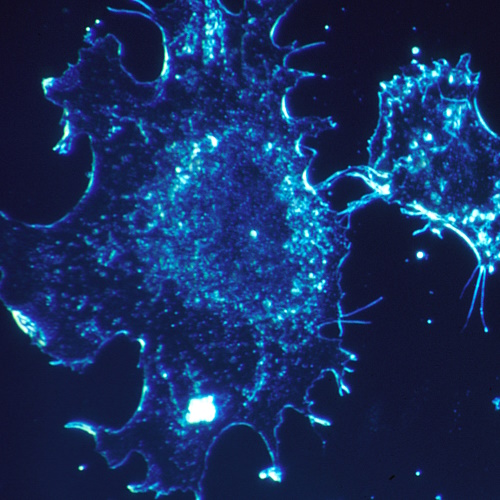The quest for precision-targeted therapies has driven scientists to explore the potential of nanoscale robotics. In recent years, magnetic nanorobots have emerged as a promising tool in targeted drug delivery and hyperthermia-based cancer treatments. These microscopic machines navigate through biological media, responding to external magnetic fields to reach specific sites within the body.
A recent study has advanced the field further by developing a novel class of superparamagnetic iron oxide nanoparticles-functionalized nanorobots (SPIONs-NR). This innovative system exhibits enhanced stability, steerability, and therapeutic functionality in crowded biological environments.
Understanding the Mechanics of Magnetic Nanorobots
Magnetic nanorobots operate through magnetic actuation, a technique that enables controlled motion using external magnetic fields. Unlike traditional gradient-based magnetic manipulation, which relies on a fixed magnet, the researchers employed spatially homogeneous rotating magnetic fields. This method allows for more precise control, mimicking the whip-like motion of bacterial flagella.
By embedding ferromagnetic materials such as Fe-Co and Fe-Pt within helical nanostructures, the team aimed to generate controlled corkscrew motions. However, one challenge with this approach is the tendency of magnetic particles to aggregate, limiting their maneuverability.
Overcoming Magnetic Agglomeration
Magnetic agglomeration occurs when the magnetic particles within the nanorobots adhere to one another, forming clusters that compromise maneuverability. To address this, previous studies introduced spacer layers to increase the separation between helices, reducing the risk of aggregation.
However, this approach inadvertently increased the nanorobot’s diameter, making it less effective in dense media. The current study takes a different approach by using SPIONs, which exhibit near-zero magnetic remanence. The SPIONs prevent clustering without increasing the nanorobot’s size, preserving its ability to move through complex biological networks.
Engineering Smaller and More Efficient Nanorobots
The primary objective of the study was to design nanorobots that are smaller in diameter yet maintain high maneuverability and physical stability. Traditional microrobots measured over 10 μm in length and 2-6 μm in width. The newly developed SPIONs-NRs, however, have a filament diameter of approximately 400 nm, significantly smaller than previous designs.
This reduced size enables better navigation through dense biological environments, such as the extracellular matrix and cellular cytoskeleton. Moreover, the nanorobots are coated with SPIONs, enhancing their magnetic properties without increasing their dimensions.
Fabrication Process: From Design to Implementation
Fabricating SPIONs-NRs involved multiple stages. Initially, the team synthesized Fe3O4 nanoparticles of approximately 12 nm in size using a chemical coprecipitation technique. These nanoparticles were then coated onto silica helices, each measuring 2.8-3.0 μm in length, using a microwave irradiation process.
This method ensured a uniform distribution of SPIONs on the surface, optimizing the magnetic properties of the nanorobots. Additionally, the researchers experimented with varying the surface functional groups of SPIONs to assess their influence on coating efficiency and repeatability.
Investigating Magnetic Properties and Motion Dynamics
The study systematically evaluated the magnetic properties of the SPIONs-NRs using transmission electron microscopy (TEM) and X-ray diffraction (XRD). TEM images revealed the presence of well-defined crystalline nanoparticles on the silica surface, while XRD patterns confirmed the coating of iron oxide.
Further analysis demonstrated that the magnetic properties of the nanorobots varied depending on the nanoparticle loading. At lower SPION concentrations, the nanorobots exhibited weak magnetic responses, limiting their maneuverability. However, optimal loading resulted in a balance between magnetic responsiveness and colloidal stability, allowing for efficient magnetic actuation.
Dynamic Simulation: Predicting Nanorobot Behavior
Simulations played a crucial role in understanding the magnetic interactions between SPIONs-NRs. The researchers modeled each nanorobot as a helical structure composed of superparamagnetic beads. By applying external magnetic fields, they observed the formation of anisotropic magnetic polarization, which influenced the direction and intensity of torque generation.
The simulation revealed two distinct motion modes: tumbling and precession. At lower field frequencies, the nanorobots exhibited tumbling motion, rotating perpendicular to the applied field. As the frequency increased, they transitioned to precession, a more controlled and directed motion.
Optimizing Nanorobot Maneuverability
One of the study’s key findings was the identification of the steerability parameter, denoted as γ. This parameter is calculated based on the helical geometry and magnetic properties of the nanorobots.
A higher γ value indicates better maneuverability in complex media. The SPIONs-NRs demonstrated a γ value of 11.9, significantly higher than the previously reported 9.9 for larger magnetic microrobots. This improvement in steerability enables the SPIONs-NRs to navigate through dense environments, such as the extracellular matrix, with greater precision.
Testing Therapeutic Functionality in Cancer Models
The researchers further explored the therapeutic potential of SPIONs-NRs in targeted cancer treatments. The nanorobots were suspended in a matrix containing MDA-MB-231 breast cancer cells and subjected to magnetic hyperthermia. By applying a rotating magnetic field, the SPIONs-NRs generated localized heat, inducing cell death through thermal stress.
The experiments demonstrated a significant reduction in cancer cell viability, with approximately 75% of cells in contact with SPIONs-NRs succumbing to hyperthermia-induced death. In contrast, only 20% of cells died in the absence of the nanorobots, highlighting their therapeutic efficacy.
Investigating Hyperthermia-Induced Cell Death
The mechanism of cell death induced by SPIONs-NRs involves both physical and thermal stress. During magnetic hyperthermia, the rotating SPIONs generate localized heat, disrupting cell membranes and causing DNA leakage.
The researchers observed prominent red fluorescence in cells stained with propidium iodide (PI), indicating compromised cell integrity. While the exact mechanism remains under investigation, the findings suggest that localized heat generation may induce both apoptotic and necrotic pathways, depending on the extent of thermal stress.
Future Applications and Clinical Implications
The successful demonstration of SPIONs-NRs in cancer models paves the way for broader biomedical applications. Future studies could explore the integration of drug delivery systems with these nanorobots, enabling dual-action therapies involving both magnetic hyperthermia and targeted drug release.
Additionally, optimizing the surface functionalization of SPIONs-NRs could enhance their targeting specificity, minimizing off-target effects. The researchers also plan to investigate the long-term biocompatibility and systemic clearance of these nanorobots to assess their potential for clinical translation.
Conclusion: Pioneering Magnetic Nanorobot Therapy
The development of SPIONs-functionalized nanorobots represents a significant step forward in the field of nanomedicine. By achieving stable, steerable, and highly functional nanorobots, the researchers have opened new avenues for targeted therapies in dense biological media.
These nanorobots exhibit promising potential in magnetic hyperthermia and targeted cancer treatment, demonstrating controlled maneuverability and therapeutic efficacy. As the field progresses, further refinements in design, surface functionalization, and drug loading strategies may transform these nanorobots into versatile therapeutic agents for precision medicine.
The study is published in the journal ACS Nano. It was led by Jyotiprakash Behera from Indian Institute of Science.






